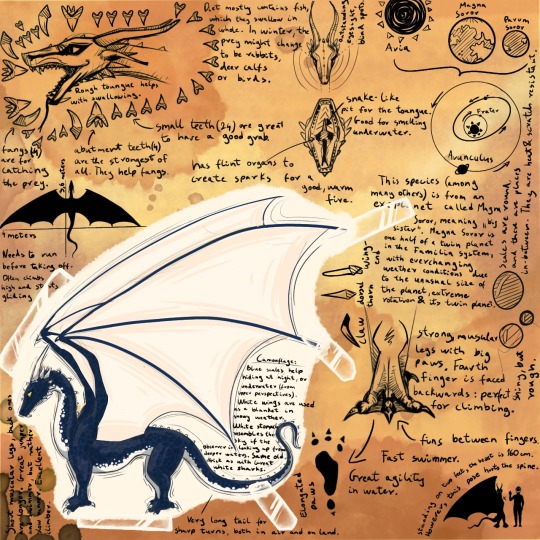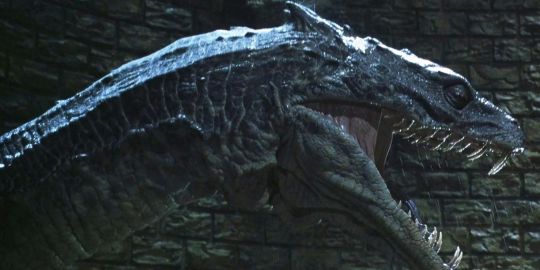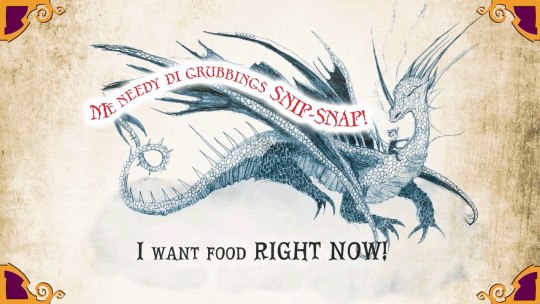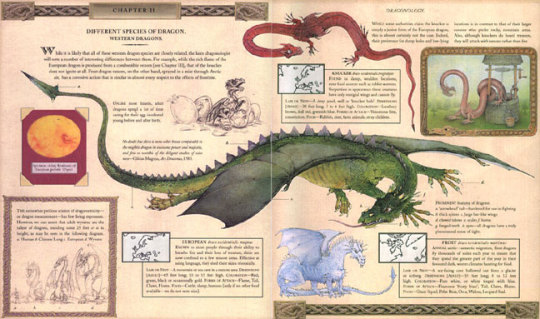#arctocyon
Explore tagged Tumblr posts
Text
It's been a while, but let's catch up with some more work I've done for PBS Eons:
• The enigmatic Paleodictyon, from "Something Has Been Making This Mark For 500 Million Years"

youtube
• The archaic ungulates Loxolophus, Arctocyon, and Eoconodon, from "How a Mass Extinction Changed Our Brains"



youtube
• And the nautilid Aturia, from "When Nautiloids Met Their Match"

youtube
———
NixIllustration.com | Tumblr | Patreon
#science illustration#paleontology#paleoart#palaeoblr#pbs eons#video#paleodictyon#loxolophus#arctocyon#arctocyonidae#eoconodon#mesonychia#ungulate#mammal#aturia#natuilida#nautiloid#cephalopod#mollusc#art#Youtube
431 notes
·
View notes
Text

“In the course of twenty million years, mammals got more and more successful until they were the biggest, fiercest, and most spectacular animals on the planet. Whatever the climate, whatever the habitat, mammals made it their own. Their great strength was their ability to adapt. They grew to gigantic sizes, they evolved into powerful killers like the famous sabre-tooth cats, and they even laid claim to the oceans.”
- Kenneth Branagh, prologue to “Walking with Beasts”
Sketches of some of the incredible wildlife of the Cenozoic Era. None of the animals are exactly shown to scale. From left to right, bottom to top:
Arctocyon, Barylambda, Coryphodon, Titanoboa
Uintatherium, Notharctus, Mesonyx, Eobasileus
Leptictidium, Gastornis, Propaleotherium, Titanomyra, Godinotia, Pakicetus, Ambulocetus
Apidium, Arsinotitherium, Andrewsarchus, Embolotherium, Moeritherium, Dorudon, Basilosaurus, Perucetus
Megacerops, Cainotherium, Merycoidodon
Cynodictis, Paraceratherium, Hyaenodon gigas, Chalicotherium, Paraentelodon
Gentilicamelus, Amphicyon, Daeodon, Moropus, Dinocrocuta, Platybelodon, Gomphotherium, Pelagornis, Purussasaurus, Odobenoceratops, Otodus megalodon
Phoruschracos, Astrapotherium, Teleoceras, Synthetoceras, Samotherium, Livyatan
Australopithecus afarensis, Deinotherium, Ancylotherium, Dinofelis
Mammuthus columbi, Smilodon fatalis, Bison latifrons, Aenocyon dirus, Arctodus simus, Panthera atrox, Titanotylopus, Equus hersternus, Sivatherium, Gigantopithecus, Paleoloxodon
Smilodon populator, Macrauchenia, Doedicurus, Megatherium, Glyptodon, Toxodon
Mammuthus primigenius, Megaloceros giganteus, Coelodonta antiquitatis, Bos primigenius, Homo neanderthalensis, Elasmotherium, Bison bonasus
#paleoart#paleontology#cenozoic mammal#cenozoic animals#cenozoic mammals#cenozoic era#cenozoology#cenozoic#palaeontology#paleoartist#artists on tumblr#paleoartists on tumblr#paleoblr#paleogene#neogene#quaternary#paleocene#eocene#oligocene#miocene#pliocene#pleistocene#palaeoart#paleo#palaeoblr#paleoillustration
56 notes
·
View notes
Text
Tv time

Finally got to design "prehistoric" Mary Poppins. Now she's an arctocyon (or bear dog)
#artists on tumblr#deadpool and wolverine#deadpool 3#deadclaws#poolverine#ship art#my art#digital art#art#mary poppins#dinosaur au
29 notes
·
View notes
Text
Oh, these doubts sound so familiar! When I was very little, I thought I was a dragon and I was OBSESSED with dragons, but then I got that werewolf phase.... And I was so, SO into becoming a werewolf, I searched for spells, I meditated, I tried everything I could find, and even started seeing twisted shadows and faint outlines of a canine body
I am fairly certain I would have been someone else if not for that werewolf phase. A unicorn? A deer? A lion? An arctocyon? Would I stay being a dragon? That is a curious question but I know it won't change who I am now.
And I think it doesn't really matter how we got to where we are now! Identity is fluid. We are changing, and so is our perception of self. It doesn't make it even a bit less real!
Like how the season changing from summer to autumn doesn't mean there never was summer.
it's pretty hard to accept as a kind of spiritual otherkin, but my mental view of my dragonkin's look is strongly affected by the media i was exposed to when i was a child, and my dragon fan phase was emerging.
so this is how i look. i drew this reference sheet recently, giving it many thoughts.

but the longer i look, the more similarities i find.





my scales are definitely blue with white belly because of saphira from the eragon movie – and books that i read as soon as i knew how to read. not even talking about the form of her neck and ratios of her body. i wanted to be like saphira more than anything, tho i hated her feathery wings in the movie (which was crap anyways. don't tell that to my five year old self tho.)
the form/colour of my wings, the narrowness of my face, my thorns and especially, the thorn under my chin seem to come from drago from bakugan (which series had been playing on cartoon network when i was very little, and needless to say, was my absolute favourite as a kid.) drago had been the comfort character through the first half of my life. i have so many drawings of him from kindergarten btw.
i was way too small when my favourite movie was the chamber of secrets (any harry potter movie is terrifying when you watch it as a three years old tbh.) anyways, the basilisk was my very first obsession. i got its teeth and form of mouth, i am just not good at drawing it. also, the lump of it's neck under the chin. this is the only harry potter part that i like. would have been even better if the basilisk were to survive.
lastly, the general outlook of myself was mostly formed by the book dragonology and the httyd books. i read through those again and again, like it was my religion. i am sure these gave me my round scales and and spikes.
i know definitely that since i can remember, i looked exactly like this. and somehow, i am still not certain if i were to watch other movies and read other books, i could have looked different, and that messes up my mind. sometimes i question myself with so unnecessary questions: was i really born like this? if not, why did i create this image? am i just a very enthusiastic fan? and even tho i know the answers don't even matter to me, the doubt still is my loyal company. something something i am just a gallery of all the things i have ever loved and shit
20 notes
·
View notes
Photo

Arctocyon, National Museum of Natural History, Paris, France
32 notes
·
View notes
Text



Immediately after the extinction of the dinosaurs ☄️, it was more beneficial for mammals to be big 💪 than to be smart, concludes a new study we collaborated on. It was not until ten million years after the dinosaur era that early representatives of modern mammal groups, such as primates, began to develop larger brains 🧠 and a more complex range of sensory and motor skills. This would have improved their chances of survival at a time when competition for resources had become much greater. Read the complete article on our website [picture 1: a skull from our collections was one of the key fossils for this study in Science. Photo: Thierry Smith] [picture 2: left is a reconstruction of the Eocene mammal Hyrachyus modestus, a rhinoceros-tapir ancesto, with already bigger brains; right is the small-brained Paleocene mammal Arctocyon primaevus, a carnivorous predator most closely related to the group including living pigs and sheep. Image: Sarah Shelley] [picture 3: Crania and virtual endocasts of the Paleocene mammal Arctocyon primaevus (left, with smaller brain) and of the Eocene mammal Hyrachyus modestus (right, with bigger brain). Images: Ornella Bertrand and Sarah Shelley]
#sciencenews#natural sciences#mammals#mammal evolution#fossils#fossil friday#palaeontology#collections#naturalsciencesbrussels#royal belgian institute of natural sciences
50 notes
·
View notes
Photo

Arctocyon, whose name means “bear dog”, as it walked like a bear and looked like a dog, though it was, in fact, an ungulate. From the Paleocene.
4 notes
·
View notes
Text
Unleash the Beasts: Part One

A collection of animals from the Paleocene to Eocene, lasting from 56-33 million years ago, from bottom to top: Arctocyon primaevus, Barylambda feberi, Gastornis geiselensis, Propaleotherium hassiacum, Uintatherium anceps, Ambulocetus natans, Godinotia neglecta, Leptictidium auderiense, Andrewsarchus mongoliensis, Moeritherium andrewsi, Arsinoitherium zitteli, Basilosaurus isis, Dorudon atrox, Embolotherium andrewsi, Megacerops coloradensis, and Apidium phiomense
#paleoart#paleontology#cenozoic fauna#cenozoic era#cenozoic#walking with beasts#fanart#tribute#homage#palaeontology#palaeoart#traditional fanart#basilosaurus#brontothere#andrewsarchus#leptictidium#propaleotherium#gastornis#embolotherium#cenozoic mammals#cenozoic mammal#mammal#mammals#paleogene#paleocene#eocene#youtube
41 notes
·
View notes
Text
It Came From The Wastebasket #20: Colossally Convoluted Condylarths
"Insectivora" was a wastebasket taxon so bad it had to be revised multiple times, but there's another particularly infamous case in mammal taxonomy that's still in the process of being resolved – the "condylarths".
This group was first created in the early 1880s, during the Bone Wars, and initially was just a subgroup of odd-toed ungulates containing only the phenacodontids. But just a few years later Condylarthra was promoted up to its own order, and groups like the periptychids and hyopsodontids were added in too.
Then over the next few decades various groups were added and removed from the condylarths, most notably with the mesonychids and arctocyonids being brought in from their previous position with the creodonts.
By the mid-20th century the condylarths had become a big convenient dumping ground for any and all "primitive" ungulate-like mammals that didn't easily fit into any modern groups, ranging in age from the early Paleocene through to the early Oligocene. But it soon became apparent that they had the same problem as the "insectivores" – there weren't really any unique anatomical features that united all these animals together.
They generally had rounded-cusped molar teeth and hoof-like toes, but they also had rather generalized "primitive mammal" features and a diverse range of ecologies. Some were small herbivores, but others were coati-like or dog-like omnivores, and some were even bear-sized carnivores.

From left to right, top row: Hyopsodus lepidus (hyopsodontid), Meniscotherium chamense (phenacodontid), Arctocyon primaevus ("arctocyonid"). Bottom row: Ectoconus ditrigonus (periptychid), Mesonyx obtusidens (mesonychid)
It wasn't even clear how the various different condylarth groups were actually related to each other. The best guess was that arctocyonids had arisen from within the "insectivores", with a Protungulatum-like form as the common ancestor of all the other condylarths. Where exactly modern ungulates had then evolved from within the condylarths was also still uncertain.

This looks familiar (Image sources: http://hdl.handle.net/2246/358 & https://knowyourmeme.com/memes/pepe-silvia)
Cladistic analysis in the 1980s began to tackle the confusing pile of assorted condylarths, and showed that they weren't the single ancestral source of all modern ungulates, but instead a loose collection of several unrelated groups from all over the ungulate evolutionary tree. Arctocyonids, periptychids, and hyopsodontids were placed as early "primitive" lineages, phenacodontids were loosely linked with the ancestors of odd-toed ungulates once again, and mesonychids were considered to be the ancestors of whales.

…And if you know modern mammal phylogeny you'll probably see some big problems here. 🐘 (Image source: https://doi.org/10.1017/S2475263000001343)
And, once again paralleling the mess of the "insectivores", it wasn't until genetic methods became available in the late 1990s that larger-scale ungulate relationships began to be properly resolved. The paenungulates (elephants, hyraxes, and sirenians), which had been traditionally considered to be a major branch of ungulates, were removed entirely and reclassified as afrotheres. And, along with some new fossil discoveries, whales were recognized as having actually evolved from within the even-toed ungulates instead of from mesonychids.
This shake-up threw the still-problematic "condylarth" classifications back into question – with some "condylarths" turning out to also be afrotheres instead of true ungulates.
Today the actual relationships of the main "condylarth" ungulate families are still in the process of being figured out, and there's a lot of remaining uncertainty and disagreement about them.
Phenacodontids seem to have mostly maintained their traditional position as early odd-toed ungulates, and hyopsodontids may potentially be part of this group too – possibly as members of the hippomorph lineage, closely related to horses and brontotheres. Arctocyonids might be a wastebasket themselves, with some studies finding them to be a mix of several different archaic ungulate lineages. Periptychids may have links to the even-toed ungulates. The mesonychids, meanwhile, are now generally considered to be a separate order from the traditional "condylarths", and may be either an early branch of the even-toed ungulates or much more basal ungulates closely related to the "arctocyonids".
Since the term "condylarth" no longer has any real taxonomic meaning some paleontologists have proposed replacing it with "archaic ungulate" to distance from the historical messiness of the old name. But this hasn't really caught on, and many papers still use "condylarth" in a very loose sense to refer to an "evolutionary grade" of early ungulates of unclear evolutionary affinities.

———
And while that's the last main entry for this month, we're not quite done yet. There's still one weekday left in October, and after digging through so many taxonomic garbage cans there's only one place we can go now.
…See you in the trash heap.
———
Nix Illustration | Tumblr | Twitter | Patreon
#it came from the wastebasket#wastebasket taxon#taxonomy#condylarths#ungulate#mammal#paleontology#art#science illustration#paleoart#palaeoblr
204 notes
·
View notes